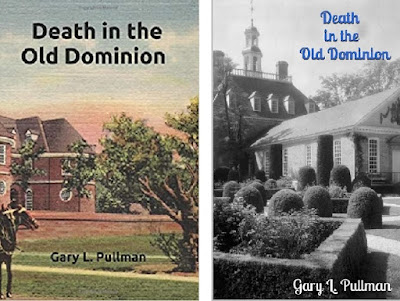Plotting
Board, Part 7
In this post, I offer a
few tips on plotting, many of which are implied, if not directly
stated in Monsters
of the Week: The Complete Critical Companion to the X-Files
by Zach Handlen and Todd VanDerWerff.
Problem-Solution
Plotting
One
of the X-Files's enduring plot devices is the introduction of
a problem and its eventual solution. The problem-solution dynamic has
built-in suspense: once a problem is posed, we want—maybe we even
ache—for it to be solved. In The X-Files, the central
problem, as set forth in the series's “mythology” about a
possible alien invasion preceding possible alien colonization,
becomes, more or less continually, more and more complicated, so the
solution, which is put off again and again, has a much greater and
more intense emotional payoff when it does come—or should have, at
any rate.
According
to VanDerWerff, episode 16 of season nine, “Release,” finally
“wraps up one of the [show's] major [remaining] mysteries” (419).
This mystery is “What happened to Doggett's son when he was
murdered?” (410) Although this episode “answers that question,”
VanDerWerff says, the answer is anything but clear. Perhaps bringing
clarity and closure would make a problem-solution plot much stronger,
as readers have invested much time and emotion in the ongoing,
long-term, increasingly complex problem. After the tease, it's only
fair to deliver.
Techno
Thrills
Technology
is constantly changing and developing. My father's life encompassed
by the Model T and the landing of an astronaut on the moon. My own
includes black-and-white television which featured, on tiny, thick
screens, programming from ABC, CBS, NBC, and a local affiliate, WTTG,
to drones, DARPA's robotic wonders, and self-driving cars (and
there's still much more to come—or, at least, I hope there will
be.)
That's
the point that VanDerWerff makes about storytelling when he writes:
. . . Video software and image manipulation programs are
getting so good that it will soon be incredibly difficult to
ascertain when footage that seems too good (or too bad) to be true
has been faked. We won't always know who's dead and who's alive, and
all it will take for those in power to introduce suspicion around a
certain set of facts is to stand up in front of all of us and shrug
and say, “Nobody knows for sure” (469).
As
always, the possibilities are only as limited as our imaginations.
Backfield
in Motion
A
way of developing plots while characterizing characters is to build a
character's backstory. Of course, too much of a good thing is
generally a bad thing, so writers have to be careful not to include
too much backstory and, when they do build such a history, the
character's past should be delivered piecemeal over a number of
episodes or, if we're talking book series, a number of volumes.
A
case in point is “Kitten,” the sixth episode of The X-Files's
season eleven. This episode is unusual, VanDerWerff thinks, because
it “takes what was already a serviceable character backstory
(specifically that of Water Skinner) and attempts a direct
dramatization of it” (474). The character's “Vietnam background”
was presented in previous episodes (“One Breath,” [season two,
episode eight] and “Avatar” [season three, episode twenty one].
In “Kitten,” viewers learn about Skinner's sacrifice of his own
“career to support Mulder and Scully” based on Skinner's belief
that their “mission to expose the truth of what the country was
doing to some of its most vulnerable citizens was more important than
his personal advancement” (475).
As
long as a character's backstory doesn't start to take over the
current story, as it does, for example, in Arrow and verges
upon doing in Punisher, building a character's background to
show how it has helped to shape him or her, how it has, in part, made
him or her the person he or she is today, is a good way to add to a
narrative's plot.
Monsters
of the Week: The Complete Critical Companion to the X-Files
has much to recommend it, not the least of which is its even-handed
balance of praise and condemnation for the series it evaluates. Both
Handlen and VanDerWerff point out what they believe is right and what
they believe is wrong with the series's episodes. Mostly, in
reviewing their book, while tossing in a few of my own observations,
I've concentrated on what these critics state and imply about the
plotting of the sci fi-horror series. However, depending on one's
purpose, on how one reads the book, Monsters of the Week can
provide a good many more—and different—insights.
And,
remember: the truth is out there!



















